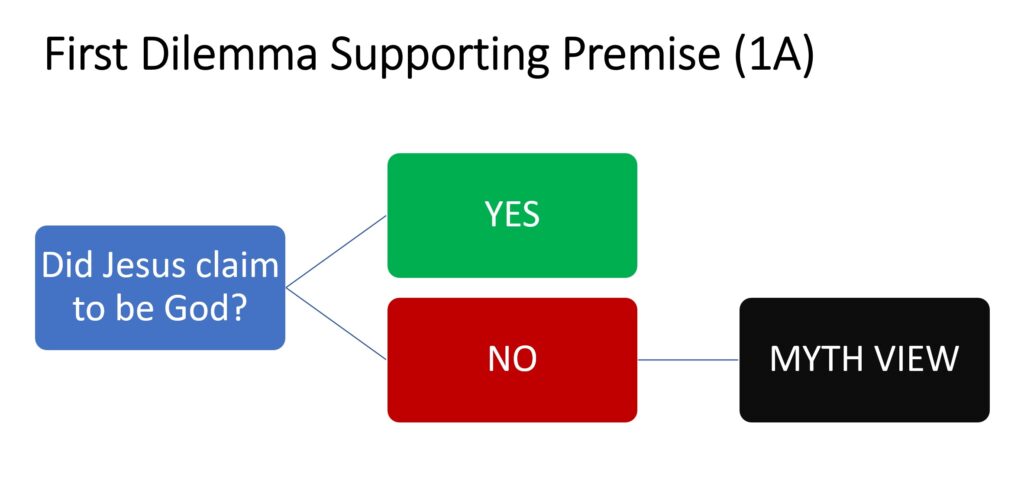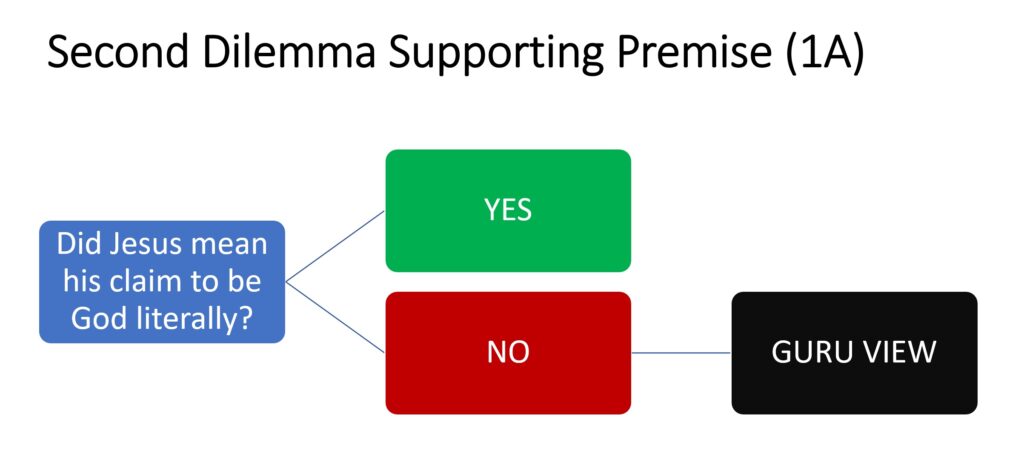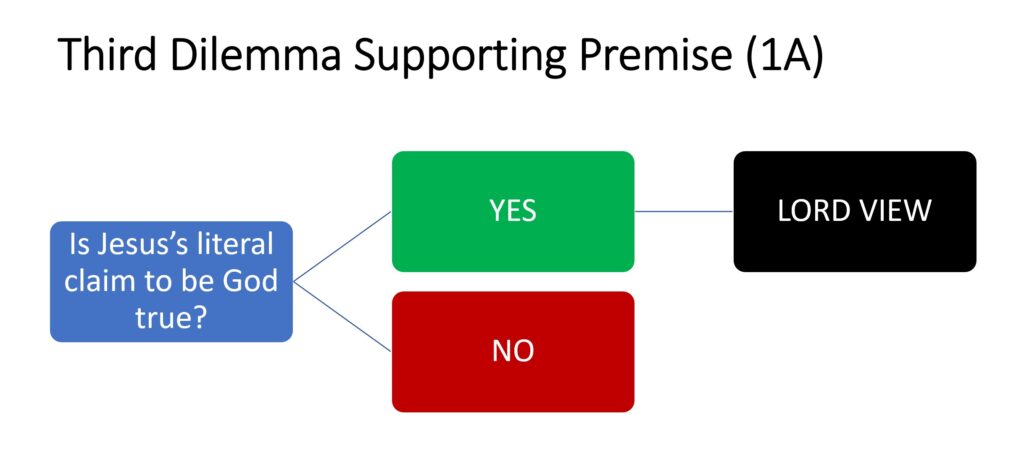Kreeft’s Case for the Divinity of Jesus – Part 9: The Third Dilemma
WHERE WE ARE
In Chapter 7 of their book Handbook of Christian Apologetics (hereafter: HCA), Christian philosophers Peter Kreeft and Ronald Tacelli make a case for the divinity of Jesus. Here is the main argument they present in Chapter 7:
1A. Jesus was either God, liar, lunatic, guru, or myth.
2A. Jesus could not possibly be a liar, lunatic, guru, or myth.
THEREFORE:
3A. Jesus is God.
In Part 3 of this series, I analyzed and clarified a series of four dilemmas (four EITHER/OR statements) that they use to support premise (1A). The four dilemmas are used to try to prove that there are only FIVE possible views that can be taken on this issue. I summarized the clarified version of their four dilemmas in this decision tree diagram:

In Part 4 of this series, I argued for some key points about the FIRST DILEMMA in the above diagram:

Two of those key points are:
- The answer to this key question is “NO” and yet the MYTH VIEW is FALSE, contrary to the logic of the FIRST DILEMMA. So, the logic of the FIRST DILEMMA is INVALID.
- The QUINTLEMMA FAILS on the FIRST DILEMMA of Kreeft and Tacelli’s series of dilemmas and thus the dilemmas FAIL to show that premise (1A) is true (that there are only FIVE possible views about the alleged divinity of Jesus).
The SECOND DILEMMA or second basic question supposedly leads to the GURU VIEW, if the answer to the question is “NO”:

Here are the six verses from the Gospel of John that Kreeft and Tacelli quote in the opening pages of Chapter 7 of their Handbook of Christian Apologetics (hereafter: HCA):
- John 8:12
- John 8:46
- John 8:58
- John 10:30
- John 11:25
- John 14:9
The question at issue concerning our evaluation of the SECOND DILEMMA is thus whether Jesus meant these statements LITERALLY, and whether in making them he was LITERALLY claiming to be the eternal creator of the universe and the omnipotent, omniscient, and perfectly good ruler of the universe.
In Part 6 of this series and in Part 7 of this series, I carefully examined each of the above six verses from the Gospel of John. I showed that NONE of the six verses from the Gospel of John quoted by Kreeft and Tacelli (at the beginning of Chapter 7 of their Handbook of Christian Apologetics) as proof that Jesus claimed to LITERALLY be God actually show that Jesus made such a claim. Therefore, even if we assume for the sake of argument that the Gospel of John provides historically accurate information about the words and teachings of Jesus (it clearly does NOT do so), the evidence from the Gospel of John FAILS to show that Jesus claimed to LITERALLY be the eternal creator of the universe and the omnipotent, omniscient, and perfectly good ruler of the universe.
In Part 8 of this series, I showed that if we answer the question posed by the SECOND DILEMMA by focusing on the quotations of Jesus provided by Kreeft and Tacelli from the Gospel of John, then the answer to the question would be: NO. Yet what Jesus says in the Gospel of John (especially in Chapter 8) also shows that the GURU VIEW is FALSE. Thus, the logic of Kreeft and Tacelli’s SECOND DILEMMA is INVALID. Therefore, we now have two major reasons to reject their argument for premise (1A). The FIRST DILEMMA is INVALID, and the SECOND DILEMMA is also INVALID. They have clearly FAILED to show that premise (1A) of their case for the divinity of Jesus is true.
WHAT ABOUT THE THIRD DILEMMA?
The THIRD DILEMMA is also a part of Kreeft and Tacelli’s argument for premise (1A):

This DILEMMA is logically VALID.
IF Jesus LITERALLY claimed to be God, to be the eternal creator of the universe and the omnipotent, omniscient, and perfectly good ruler of the universe, and IF that claim was TRUE, then Jesus would LITERALLY be God. In that case, the LORD VIEW would indeed be TRUE. So, the logic of the THIRD DILEMMA is good.
NOTE: Even a broken clock tells us the correct time twice every day.
In the next post, I will examine the FOURTH DILEMMA in Kreeft and Tacelli’s argument for premise (1A).
